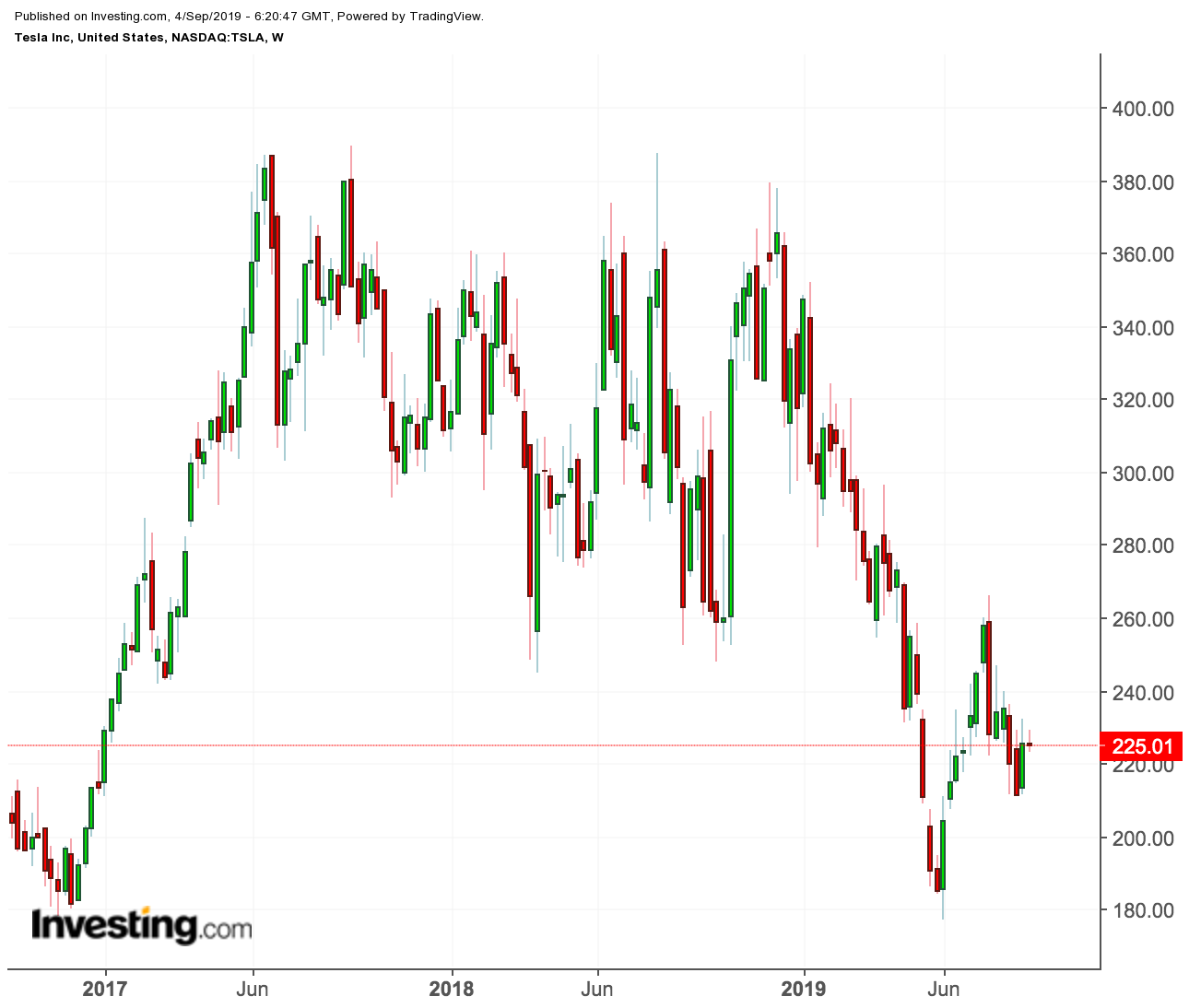Tesla (NASDAQ:TSLA) investors can barely catch a break from the bad news flow. Last month, it was Walmart (NYSE:WMT) suing the electric car-maker ,blaming its faulty batteries for causing a fire in at least seven of its stores. And who knows what’s in the cards for September.
But amid this never-ending cycle of setbacks, Tesla shares have surged, in a rebound that started in June. Despite the occasional dip, such as yesterday's, when the stock closed down 0.3% at $225.01, shares have gained more than 22% in the past three months at a time when the benchmark S&P 500 saw highly volatile trading and investors shunned growth stocks.

And yet, Tesla shares are still down more than 30% this year, hurt by a series of missteps and on concerns that the car-maker is finding it hard to grow the order book for its electric cars and balance its accounts.
The recent rally could prove short-lived given the boom-and-bust pattern of Tesla shares, however it shows one positive change: investors are increasingly buying into CEO Elon Musk’s new narrative that emphasizes the expansion of its production capacity and model lineup, rather than the achievement of bottom-line profitability.
Tesla is now targeting break-even in the current quarter, after the car maker reported a larger-than-expected second-quarter loss in July. The company is eyeing a return to profitability during the last three months of the year.
Volume Growth, Capacity Expansion
In a letter to shareholders in July, Musk emphasised that “continuous volume growth, capacity expansion and cash generation will remain the main focus,” adding that Tesla is working to expand its “manufacturing footprint in new regions, launching new products and continuing to improve the customer experience while generating and using cash sustainably.”
With that rhetoric, investors are luckily seeing some positive developments on the ground that are helping the stock to sustain the momentum. Last week, Tesla won an exemption from a 10% purchase tax on the vehicles it sells in China, despite trade tensions between the country and the U.S.
The exemption, which is aimed at domestic makers of electric vehicles, benefits all Tesla models sold in China. The company currently imports all of the cars it sells in the Asian country, but plans to make the Model 3, its best-selling vehicle, at its new China plant which is likely to start production late this year.
In Europe, demand for the Model 3 sedan has been steady, and should help offset some weakness seen in China, Wedbush analyst Daniel Ives wrote in a recent note. These positive comments coincide with Moody’s Investors Service’s recent assessment of the company’s credit outlook, stating that it has changed from negative to stable. The reason cited is an improvement in the Model 3 production systems.
“The stable outlook anticipates that improving operating efficiencies of the Model 3, growing regulatory credit sales, and an adequate liquidity position will provide a sufficient runway to continue undertaking cost cutting initiatives that will improve profitability in the face of aggressive expansion plans,” Moody’s said in a note on Tesla.
With this positive assessment, however, sales of the company’s older and more profitable vehicles, the Model S and X, continue to be weak, hurting margins and cash generation. In the U.S., growth for these cars has stalled after a strong end to the second quarter, and Tesla would need to see a strong September order flow to hit its aggressive third-quarter guidance, according to Ives.
Bottom Line
Despite some positive news flow in recent weeks, demand for its cars and the company’s ability to make a profit are the two factors which will decide whether Tesla shares are a good long-term investment. If Tesla is able to turn the corner on these fronts quickly without the CEO generating more controversies, it will certainly provide a positive signal for its stock.
